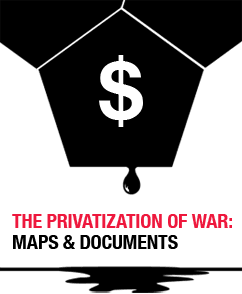Book Review
Theorizing the Revolutionary Political Action of Social Movements during the Pink Tide (Latin American Perspectives)
Dario N. Azzellini Communes and Workers’ Control in Venezuela: Building 21st Century Socialism from Below. Chicago: Haymarket Books, 2018.
Anthony Pahnke Brazil’s Long Revolution: Radical Achievements of the Landless Workers Movement. Tucson: University of Arizona Press, 2018.
Azzellini’s Communes and Workers’ Control in Venezuela: Building 21st Century Socialism from Below examines historical accounts of numerous radical groups and posits that the Proceso (the Bolivarian Revolutionary ‘Process’) is “complex and contradictory, entail- ing both cooperation and conflict,” and should be “characterized by a two-track construction: from below (constituent power) and from above (constituted power)” (6). The Proceso aims “to redefine the state from below and proposes a renewed concept of popular power.” It “draws its power from its diversity, and does not seek homogenization.” This diversity includes different contentious actors (such as urban barrio residents, peasant and indigenous communities, and workers’ factories [Angosto-Ferrández, 2015; Smilde and Hellinger, 2011]), economic actors (state capitalists, state employees, informal workers, and communes), and people across the partisan and ideological spectrum. Whereas other accounts see the drawing together of such diverse groups through populism and charismatic figures, Azzellini highlights a shared effort to awaken, build, and use constituent power so that people in communities have more decision-making power over local affairs.
For Azzellini, former President Chávez was the group’s most important “inter- locutor,” consistently encouraging allied groups to be rebels while not always endorsing their rebellion. Azzellini’s “two-track” approach—in which popular groups seeking to exercise constituent power, advocated by the state, often face constraints from the same state—is especially helpful. The Movimiento Democrático Popular (Settlers’ Movement—MDP) and the comités de tierra urbana (urban land committees), for instance, emerged from the state’s initial efforts but, as Azzellini documents, quickly “created an autonomous structure and became a central pillar of popular organization in the barrios” (73), leading to demands for decision-making power that reflected conflict between constituent (them) and constituted (the allied pro-Chávez ministry or official) power. Azzellini quotes an interviewee discussing a conflict between the urban land committees and the Ministry of Popular Power for Housing and Habitat (75) as saying:
"We have told the Ministry of Housing that our fundamental problem is not that they give us resources and that they finance our projects, but that we want to define housing policy. . . . We have always said that we must advance in the building of a new society with the state, without the state, and against the state. The relation with the state is not defined by us but by the willingness of the state to subordinate itself to the interests of the pueblo."
Perhaps the most valuable part of this very well-researched and well-argued book is its rich description and careful analysis of multiple actors within various local groups and organizations. Azzellini argues that the state and the movements have competing logics. State sponsorship can amplify the resources and ability of movements to act but can harm their “organic growth” and development, thereby potentially reducing the space and creativity needed for the movement’s vision. The state is an occasional ally, but its bureaucratizing tendencies create an inherent tension, since poder popular (popular power) must “overcome the bourgeois state” (56). In this anti-Leninist reading, Azzellini intuits the possibility—perhaps even inevitability—of the current challenge for the Bolivarian movements: the Maduro government has intensified the very bureaucratizing logics critiqued by Azzellini, and the movements loyal to the Proceso can expect little support if an opposition government takes power. Will one generation of Bolivarian leadership be enough to allow such movements and ideas to become a permanent part of Venezuelan politics? (...)
Theoretically, these books also complicate the characterization of social movements during the pink tide. While for Pahnke revolutionary movements such as the MST engage in a duality (in the Leninist interpretation) that is possible primarily because of the movement’s reliance on and challenge to constitutional provisions, for Azzellini this characterization of the movement’s approach would render it a force lacking revolutionary character, particularly because law and constitutionalism are “in contradiction” with constituent power in that the former “neutraliz[es] the potent historical motor of constituent power” (35). Instead, for Azzellini, revolution is interpreted as a process that “comes into effect when the multitude meets the potential, the capacity to emanate, design, mold, and create something new without having to derive it from, or be subject to, that which already exists” (24; see Virno, 2003; 2004); Therefore, the juxtaposition of these varying theoretical positions on revolutionary political action (dual power and the two-track process) and the evaluation of the movements in Brazil and Venezuela compel reconsideration of the relationship between constituent power and political action. The books reviewed here offer valuable contributions on the origins and evolution of two of Latin America’s most prominent social movements.
Links zu diesem Artikel:























